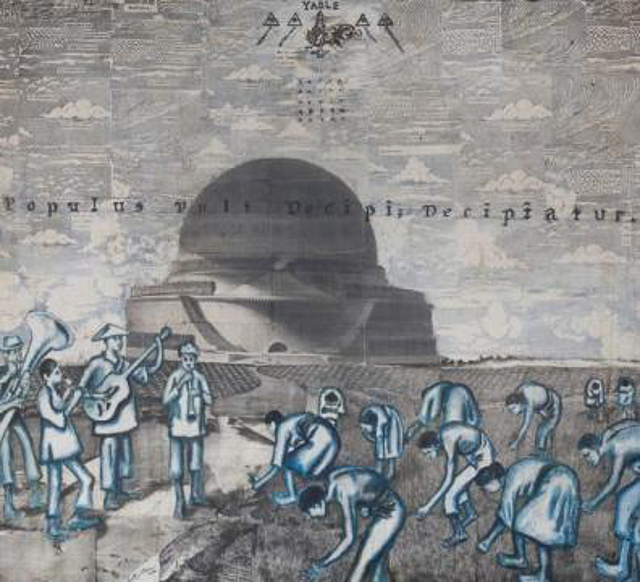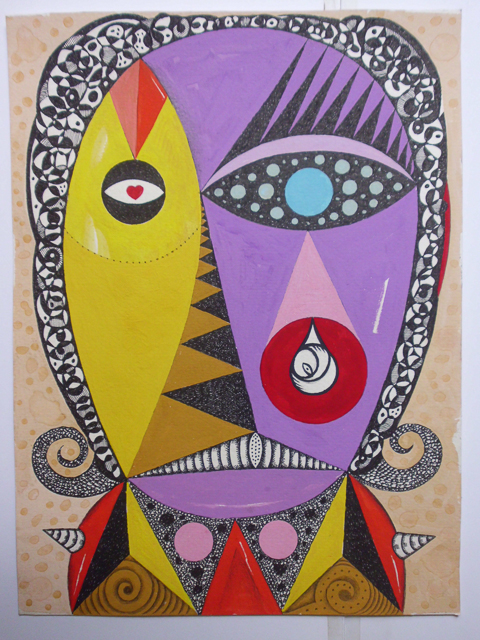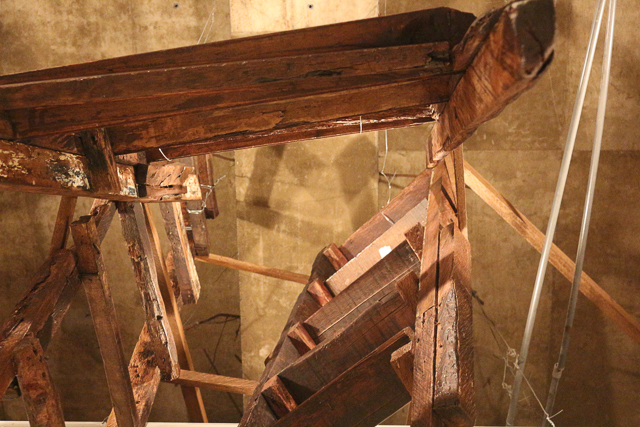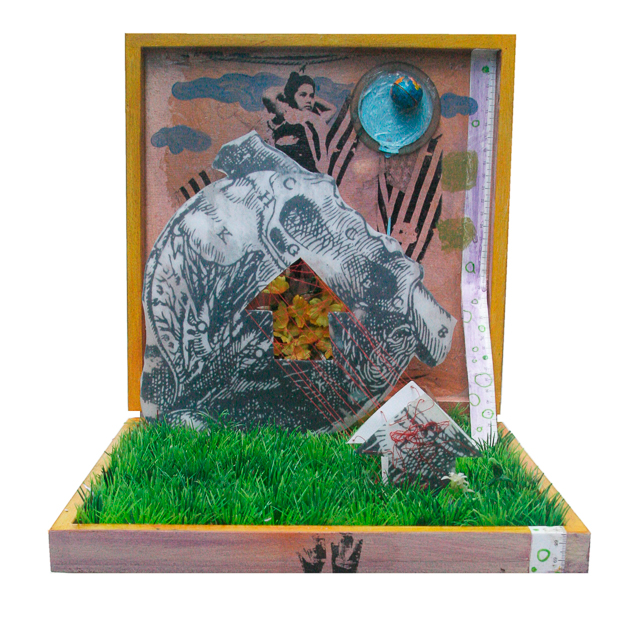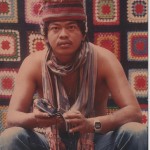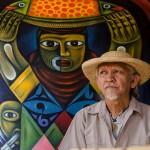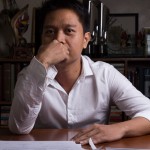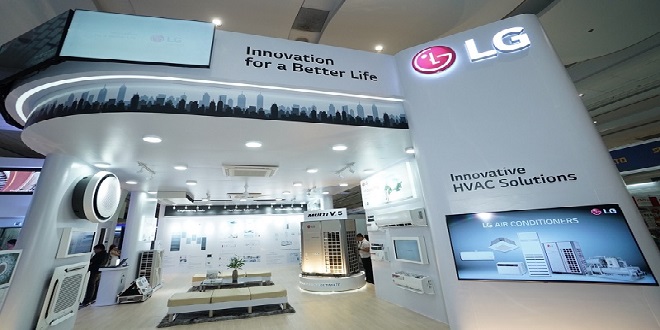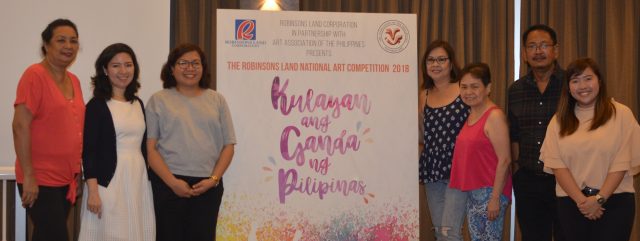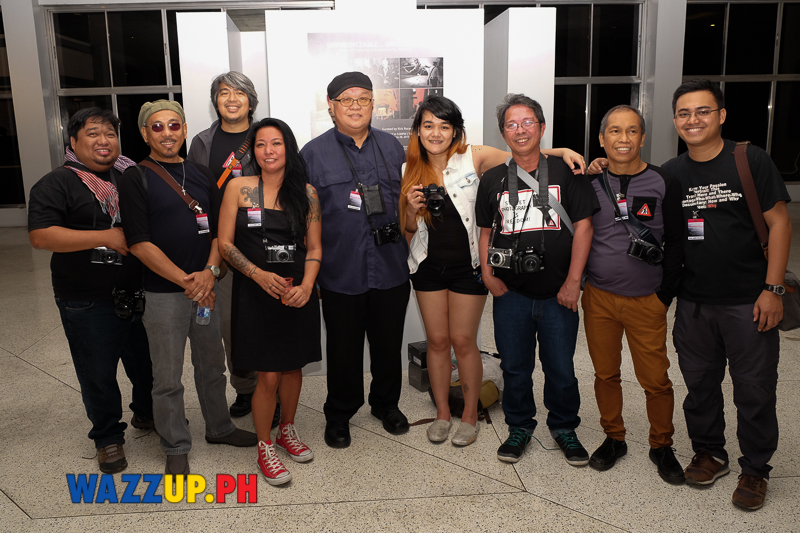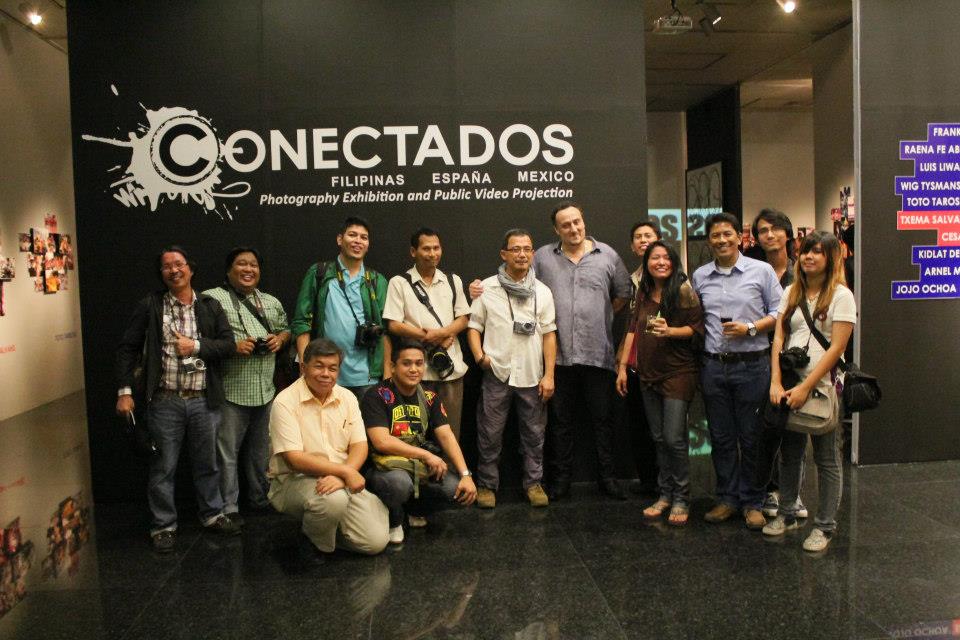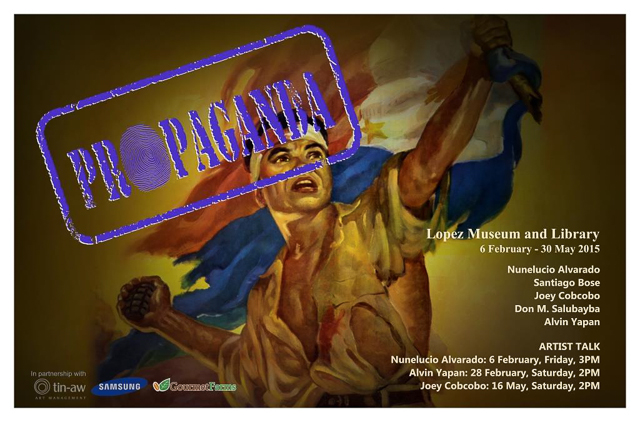
Last February 6, 2015, the Lopez Museum and Library, in a partnership with Samsung Electronics Philippines entitled Propaganda. This exhibits features the idea of myth-making and its capacity to inspire change or derail genuine national progress.
According to Ricky Francisco, co-curator of Propaganda, said the exhibition was conceived to commemorate the 70th anniversary of the end of World War II.
The exhibit was based on the concept of Don M. Salubayba, 2009 CCP Thirteen Artists Awardee, who passed away during the planning process. Some of his important works such as Abysmal Abound: Trinity of Passiveness, Pagsasabuhay, and his “anino-mation” (shadow puppetry animation) A Not so Giant Story (Legend of the Philippines) are displayed in the exhibit. The exhibit also serve as a tribute to him.
Also featured are World War II posters, election-related archival materials, LVN movies still photographs, a collection of rare maps, Philippine imprints; a recreation of Santiago Bose’s 1983 installation Pasyon at Rebolusyon that has been reinstalled by Kawayan de Guia; commissioned works from social realist and Negros Occidental-based artist Nunelucio Alvarado; 2012 Thirteen Artists awardee Joey Cobcobo; and writer and Gawad Urian awardee film-maker Alvin Yapan.
exhibition, and be more discerning when presented with information, whether political or otherwise.
Enriching the exhibit and re-framing the exhibition issues are works by 18th century masters Juan Luna and Félix Resurrección Hidalgo, along with those of national artists Fernando Amorsolo, Jose Joya, Cesar Legaspi, Vicente Manansala, and J. Elizalde Navarro from the permanent collection.


USING TECHNOGLY
One unique feature of the exhibit is the use of technology. It uses Samsung Smart TVs installed with a museum app called “Facets”. Combining traditional media with digital content resulting in a unique and immersive museum experience. It is an exhibition that challenges not just our notions of art and history, but also how we view museums and libraries.
Through Samsung Smart TVs and mobile devices, visitors will see ultra-violet scans of Juan Luna’s Espana y Filipinas, revealing details behind the painting; flip through digital copies of the library’s oldest books in its collections that date back to the 15th century; watch a video of the conservation process of these old books; and view several of Felix Resurreccion Hidalgo’s studies of Per Pacem Et Libertatem on a tablet device.
PUBLIC PROGRAMS
Artist Talk with Nunelucio Alvarado: February 6, 3 – 5PM
A lecture with Supreme Court Senior Associate Justice Antonio Carpio
on the Scarborough Shoal Claim of the Philippines: February 21, 2 – 4PM
Screening and open forum with filmmaker and artist, Alvin Yapan: February 28, 2 – 4PM
Lecture with historian, columnist and scholar, Dr. Ambeth Ocampo
on the relationship of history and myths/myth-making: March, 2 – 4PM
Cartography: The art of map-making: April, 2 – 4PM
Screening of Dawn of Freedom, followed by an open forum: May 2, 1 – 4PM
Artist Talk with Joey Cobcobo and Pandy Aviado: May 16, 2- 4PM
PERMANENT COLLECTION
Aside from the featured Propaganda exhibits, the museum is also home for a great collection of art works. The museum is also home to paintings by 19th century Filipino masters, Juan Luna and Felix Resurreccion Hidalgo.
The museum also has selected works by 20th century National Artist Fernando Amorsolo, who gained prominence during the early 30’s and 40’s as the artist who popularized the era’s rustic Philippine landscape and the lovely dalagang Filipina.
The museum has acquired paintings by many of the country’s National Artists including Victorio Edades, Botong Francisco, Jose Joya, Ang Kiukok, Vicente Manansala, HR Ocampo, Cesar Legaspi, Arturo Luz, and J. Elizalde Navarro. Important artist such as Fernando Zobel, Nena Saguil, Macario Vitalis, and Romeo Tabuena are also represented in the museum’s ever-expanding collection. The museum is equally proud of its under-rated pieces from Alfonso Ossorio, Juan Arellano, and Dominador Castañeda.
Among the museum’s other treasures is an initial collection of 14th and 15th century artifacts recovered in Calatagan burial sites. The Calatagan excavations consists chiefly of porcelain of Chinese origin, Filipino earthenware, beads and a few Annamese and Siamese pieces.
The museum’s Rizaliana includes some 90 priceless letters of Jose Rizal to his mother and sisters. Other memorabilia in the collection include his billfold and brushes, flute, as well as personal papers from Dapitan, Hongkong, and Europe.
Furthermore, the library has a collection of over 21,000 Filipiniana titles. Its rare Philippine imprints date from the early 17th century – the oldest being a unique copy of the Belarmin-Lopez Doctrina Cristiana in Ilocano (Manila, 1620.) Among the other rare books and manuscripts are works by such eminent printers as Tomas Pinpin, Raymundo Magysa, Nicolas Cruz Bagay, Laureano Atlas, and Juan Correa. The earliest book in the library is the third edition (Rome, 1524) of De Moluccis Insulis, by Maximilianus Transylvanus, which has the first printed account of Magellan’s voyage to the Philippines.
Another important book in the collection is the famous Relacion de las Islas Filipinas by the Jesuit Pedro Chirino (Rome, 1604). To these are added old periodicals (such as The Tribune), photo albums of Philippine flora, fauna, Philippine urban and rural environs, and microfilms of manuscripts and the like.
EXHIBIT TIMINGS
The exhibit Propaganda will run from February 6 to May 30, 2015. For more information on the exhibit, you call Tina at 6312417 or email lmmpasig@gmail.com.
Lopez Museum and Library is located at the G/F Benpres Bldg., Meralco cor. Exchange Rd., Ortigas Center, Pasig City. Operating hours are 8-5pm Mondays through Saturdays except Sundays and holidays.


